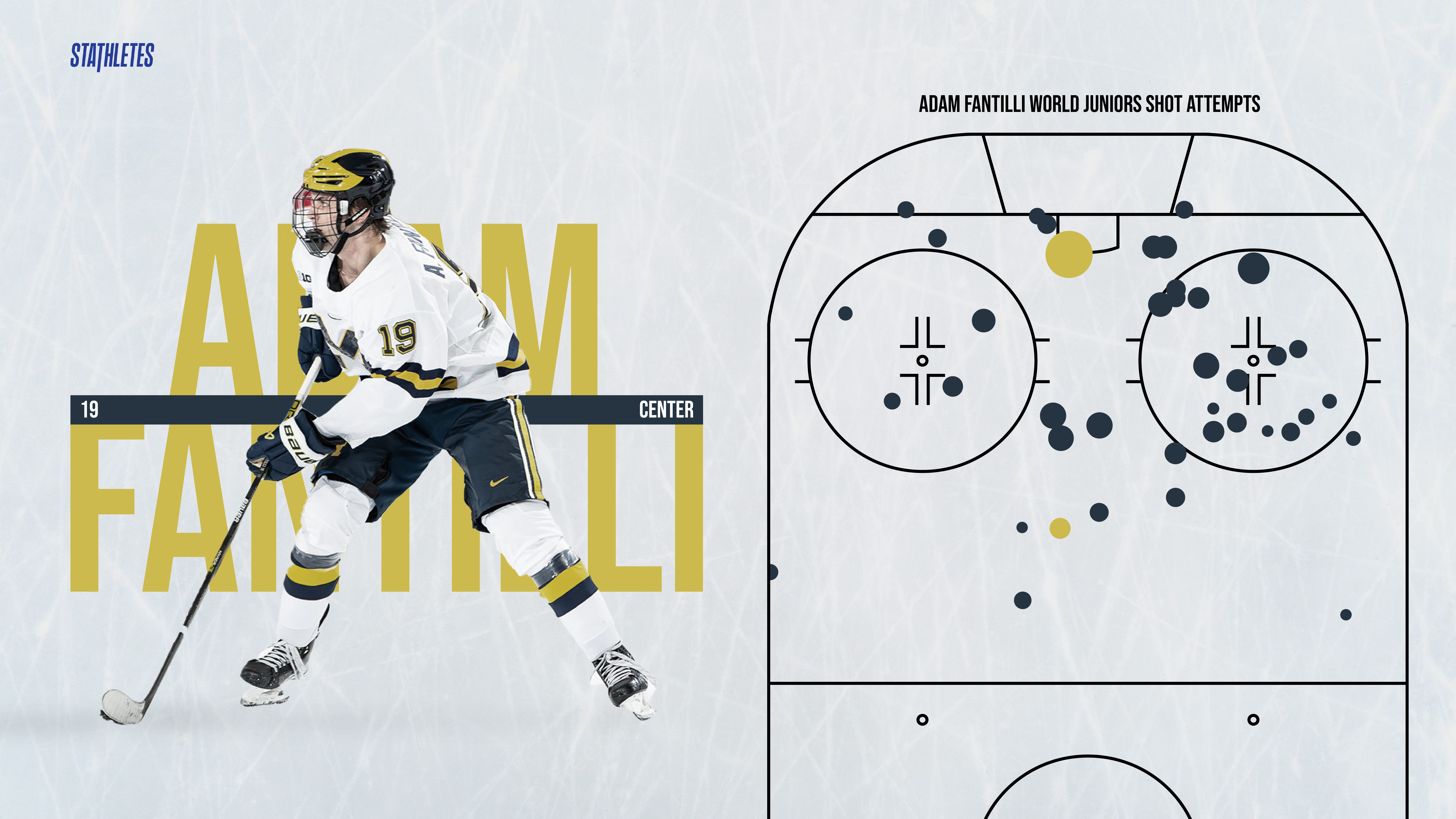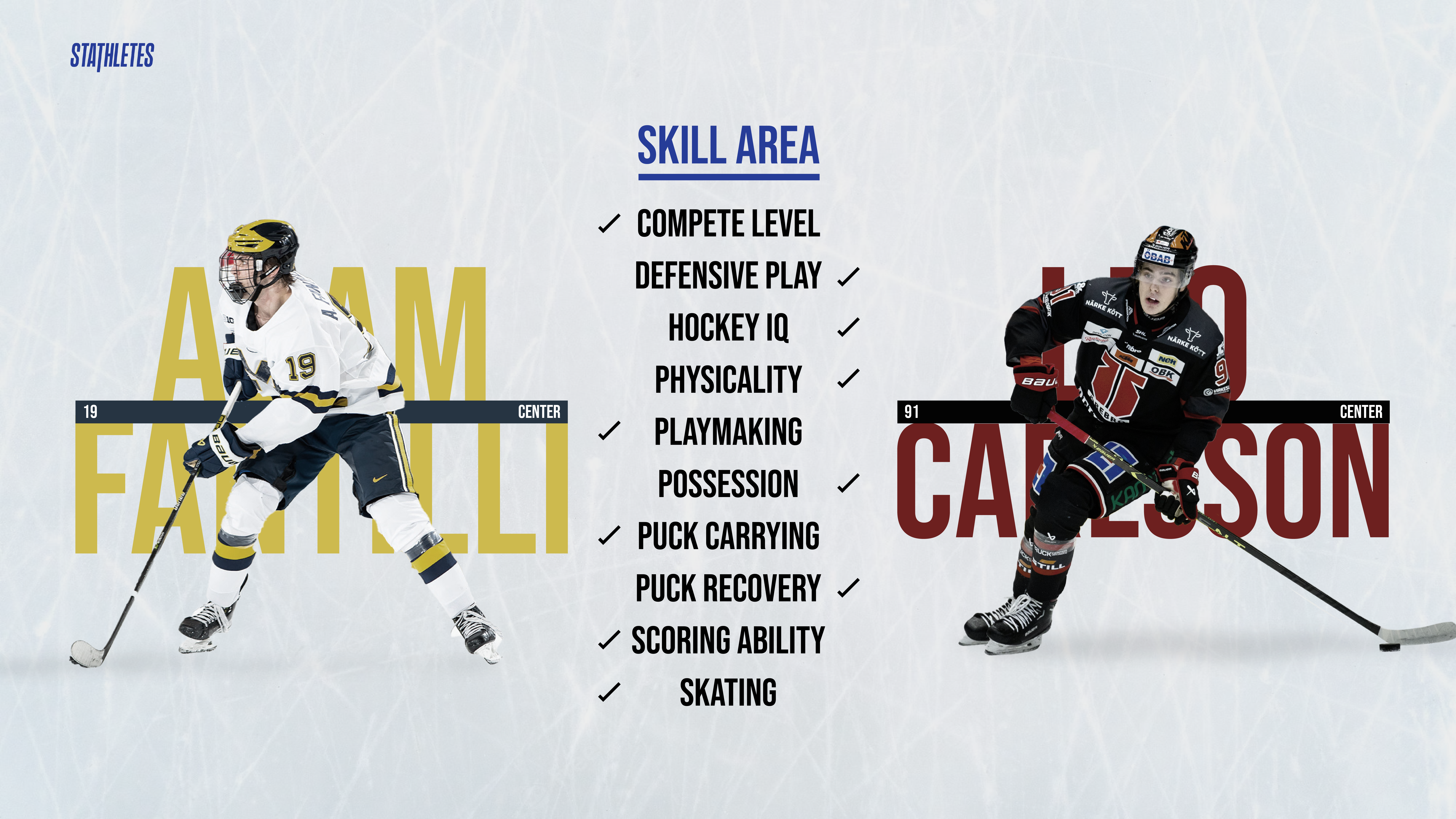The 2023 NHL draft starts Wednesday in Nashville (Round 1, 7 p.m. ET on ESPN and ESPN+) and stories about Connor Bedard have dominated the coverage.
Rightfully so! The 17-year-old’s 143 points with the Regina Pats is the highest single total in 27 years. This from a player that was granted exceptional status to enter the Canadian Hockey League at age 15, making him the first such designated player in WHL history and the seventh player overall to gain such status. It’s worth noting that three of the previous six such skaters have been selected first overall in the NHL Draft.
However, there are other top prospects that teams will be very happy to choose in the first round. Here are the top five players on Stathletes’ list through the lens of data and analytics.
No. 1: Connor Bedard, C, Regina (WHL)
Key skills (strengths): Goal scoring ability; Getting to the slot; Puck possession
Continued growth (improvements): Defensive zone activity
When you watch Bedard, his high-quality shot is the main focus. He has a quick and deceptive release that can beat goalies, and he has the ability to make plays at speed. He attacks the middle of the ice and puts pressure on defenders with his play carrying the puck and passing. Bedard regularly draws the attention of defending players which allows him to create space for teammates.
Bedard’s heat map and shot map from this year’s World Junior Championship show how dangerous he can be offensively.

The shot map shows expected goals by size of the dot, with the larger dots being higher quality shots. The red dots are the goals which are largely clustered around the inner slot for Bedard.

Comparable Player: David Pastrnak
No. 2: Adam Fantilli, C, Michigan (NCAA)
Key skills (strengths): Playmaking; Puck carrying; Hockey IQ
Continued growth (improvements): Going to high traffic areas
Fantilli is the third freshmen to win the Hobey Baker Award joining Jack Eichel and Paul Kariya. He won two gold medals for Canada this year in both the World Juniors and World Championships.
Fantilli moves pucks to dangerous areas of the ice. He excels in carrying the puck in zone entries and reads plays well to create offense. Fantilli uses his skating skills to evade pressure, and he creates space to make plays.
He’s not just an offensively dominant player, Fantilli has good positioning in the defensive zone allowing him to recover pucks at a high rate.
Fantilli’s shot map shows the expected goals with larger dots being higher quality scoring chances and yellow being a goal in the World Juniors. It is a good indication of his skill as he can shoot from a lot of areas in the offensive zone and still have a quality attempt.

We can also compare him to No. 4 on this list, Leo Carlsson, another big center.

Comparable NHL Player: Jack Eichel
No. 3: Matvei Michkov, RW, SKA St. Petersburg (KHL)
Key skills (strengths): Goal scoring ability; Creative offensively; Transition offense
Continued growth (improvements): Defensive zone activity
It’s difficult to predict the exact spot that Michkov will be drafted. A three-year KHL contract clouds the profile of Michkov.
But looking strictly at on-ice performance, Michkov would be a top pick in any draft. He’s creative offensively and moves the puck to high danger areas. Michkov is a shoot first player and is extremely potent off the rush. He has good anticipation and instincts both offensively and defensively.
Michkov is the youngest player to ever suit up for the Russian National Team. His 20 points in 27 games has him scoring at a higher per game rate than Alexander Ovechkin in his draft year in the KHL.
This player is the wild card to watch in terms of what team will draft him.
Comparable NHL Player: Nikita Kucherov
No. 4: Leo Carlsson, C, Orebro (SHL)
Key skills (strengths): Puck protection; Getting to scoring areas; Decision making
Continued growth (improvements): Puck recovery
There’s a good chance Carlsson goes before No. 4. He’s a puck possession player who likes to have the puck on his stick especially in transition. On zone entries, Carlsson has a high rate of entering with speed and attacks the middle of the ice.
His puck management is ideal, limiting turnovers and focusing on simple plays. Carlsson is able to absorb contact and keep the puck on his stick.
In the offensive zone, Carlsson can get to the high traffic areas and shoot from the slot. His World Junior shot attempt image is a good example of high-quality shots close to the net. The larger the dots, the higher quality the shot with red being a goal by Carlsson.

Comparable NHL Player: Pierre-Luc Dubois
No. 5: Will Smith, C, USA U-18 (NTDP)
Key skills (strengths): Playmaking/vision; Offensive instincts; Playing with pace
Continued growth (improvements): Limiting turnovers
Rounding out the five prospects is Will Smith, who played for the USA U-18 NDTP last year and is headed to Boston College, where he will be the 14th member of his family to attend.
Smith has great vision which helps his playmaking. He not only sees passing lanes but is able to complete difficult passes. Smith is offensively creative and gets pucks to teammates to create scoring chances. He has the willingness to take the puck to the net and get involved in high traffic areas. Smith’s U18 passing visual shows his ability to complete difficult cross-ice passes. Those in red indicate feeds that resulted in goals.

Comparable NHL Player: Sebastian Aho
